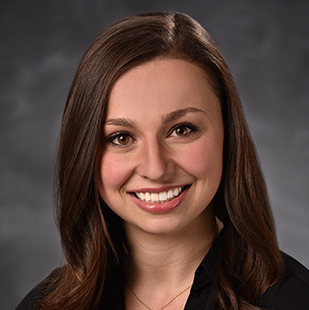Despite a significant number of advances in treatment for childhood cancers over the past few decades, around 7.5% of all children with cancer still die within one month of their diagnosis.
Katherine Lind, MD, a fellow in the Department of Pediatrics Section of Hematology, Oncology, and Bone Marrow Transplantation at the University of Colorado School of Medicine, along with CU Cancer Center member Adam Green, MD, combed through more than 20 years of medical records from Children’s Hospital Colorado to look for reasons why early death occurs, and if there are interventions that can be created to prevent it.
“This is a population I have been studying for a long time,” Green says. “We published a study a few years ago about the size, cancer types, and demographics of this population and the fact that they don’t generally enroll on clinical trials. But because we used a national cancer registry, we didn’t have much specific information on the cause of death, treatment, timing, or presentation, as well as the socioeconomic status of the families. We wanted to answer questions about the specific circumstances of early death for these patients on a medical record level, instead of a cancer registry level.”
Delays in seeking care
Before taking a deep dive into the data, Lind hypothesized that one cause of early death was the fact that the young patients had such aggressive disease that by the time they began to show symptoms, it was already too late. But to her surprise, the records showed otherwise.
“We were surprised to find that for patients who died within a month, compared to the patients who lived at least a month, there was a longer time from symptom onset to when they first started getting medical care,” she says. “That made us wonder if there’s an opportunity here for us to think about access to care or helping parents understand red flags to look out for when it comes to pediatric cancer symptoms.”
Because high-grade brain tumors and leukemia are the most common cause of early death in pediatric cancer, the researchers say it’s important for parents and pediatricians to be aware of symptoms such as headaches, pain, fever, bruising, and fatigue.
“Fortunately, childhood cancer is very rare, but that also means people aren’t always testing for it,” Lind says. “What we want to think about going forward is how do we — without frightening everyone or causing mass hysteria — help families and providers understand what are good opportunities for testing? We need to remember that childhood cancer does happen, and it can be cured if we are lucky.”
Lind and Green cite an educational program in England, targeted toward community medical providers, about signs and symptoms of brain tumors and when to be concerned.
“That provides a nice model for us to think about working with community providers,” Lind says. “For families, a lot of your anticipatory guidance comes at your general pediatrician’s visit. If there are ways we could integrate that information there, that would be a wonderful opportunity.”
Varied causes of early death
Green says another interesting finding of the study was the differing reasons for early death for different types of cancer, potentially giving cancer doctors new strategies for caring for those patients.
“In brain tumor patients, the cause of death was typically progression of the tumor, leading directly to death from brain dysfunction,” he says. “In leukemia, however, patients tend to come in with very weak immune systems because the cancer has taken over their bone marrow. Those patients are more likely to die of infection. There have been great strides over the past 20 years on how we do supportive care and prevent infections. These are the things we need to think about in terms of ways to prevent early death, depending on what group of tumors we're dealing with.”
For social factors, further study needed
Though a stated aim of the study was to look at early death in different racial, ethnic, and socioeconomic populations, there wasn’t enough in the Children’s Colorado data on those groups, Lind says. That’s why she has started a multicenter study to interview families who have lost a child to early cancer death, making it a point to enroll people from across the racial and socioeconomic spectrum.
“We want to talk to them to understand their experiences — if they faced challenges in diagnosis, recognizing symptoms, or maybe getting to care,” she says. “For a lot of working families, getting a kid to a pediatrician during normal weekday hours is really hard. If you add to that this idea that kids have sicknesses all the time and it can be difficult to know what symptoms are serious, that makes it an even more complex scenario.”
Removing barriers to immediate care for pediatric cancer patients with aggressive cancers — whether it’s better education on what symptoms to look out for or making it easier to access care — helps primarily by getting them seen by doctors early enough to be treated successfully, often via enrollment in clinical trials, the researchers say.
“Fortunately, there are new trials opening all the time,” Lind says. “Diseases that used to be considered incurable now have a lot of options. We have a lot of patients who present with disease, and we can say, ‘I don’t have something that is 100%, guaranteed to cure you, but here are different trial options we’d like to offer you.’ We have a lot of really great opportunities to help kids, be it something that already exists or things that we’re developing over time.”





